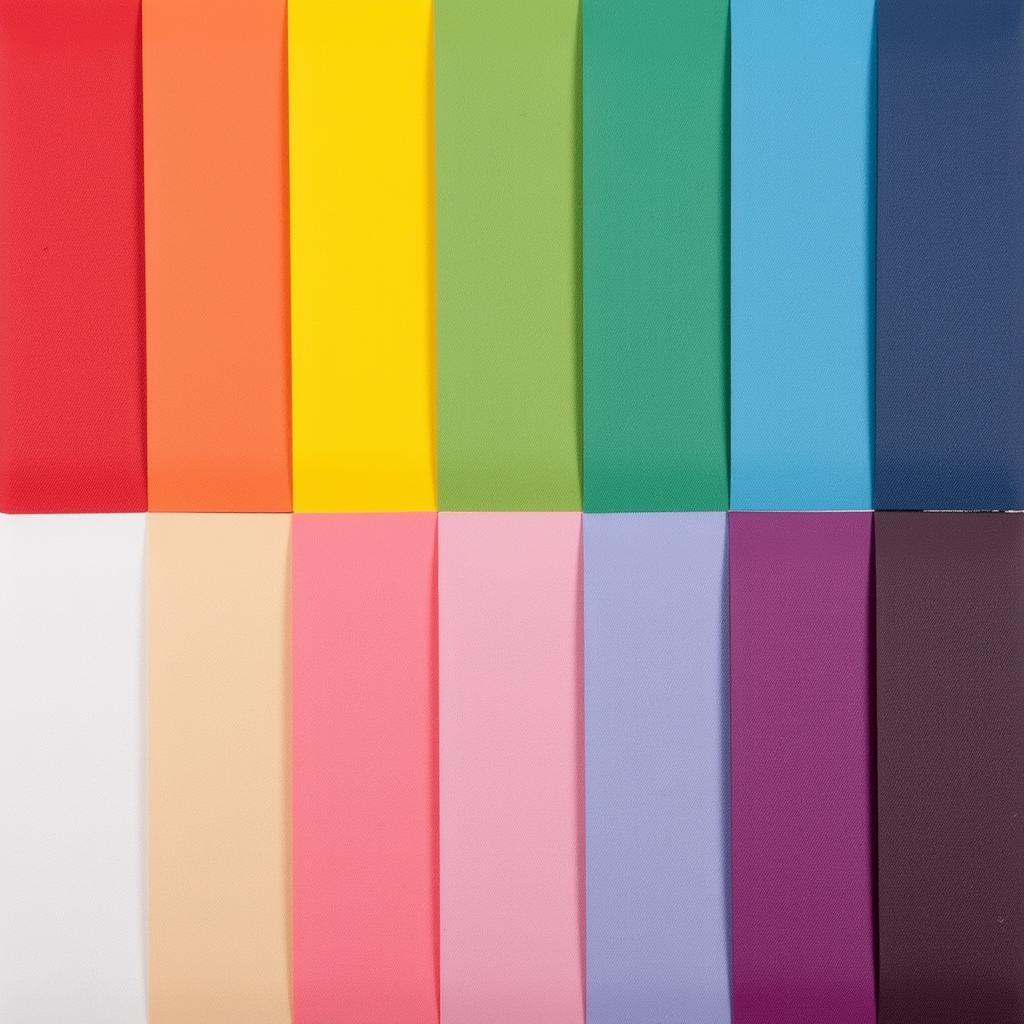Satin paint is known for its subtle sheen, but what color is it inherently? The truth is, satin paint doesn’t have a specific color. It’s a finish, not a color itself. Think of it like choosing between glossy or matte photo paper – the paper itself can be any color, the finish just affects how the light reflects. So, satin paint can be any color you desire, from vibrant reds and calming blues to classic whites and dramatic blacks. Let’s dive deeper into understanding this versatile paint finish.
Decoding Satin Paint: Sheen and Versatility
Satin paint gets its name from its smooth, velvety appearance reminiscent of satin fabric. Its sheen falls between matte and semi-gloss, offering a subtle luster that reflects light without being overly shiny. This characteristic makes satin paint incredibly versatile and popular for various surfaces.
Where Can You Use Satin Paint?
Satin paint’s durability and easy-to-clean nature make it a great choice for high-traffic areas. It’s often preferred for:
- Walls in hallways, kitchens, and bathrooms: Satin paint can withstand the wear and tear of busy areas while also being easy to wipe clean.
- Trim and doors: Its slight sheen adds a touch of elegance and visual interest.
- Children’s rooms: Satin paint can stand up to sticky fingers and crayon marks.
- Ceilings in bathrooms and kitchens: The subtle sheen can make these spaces feel brighter and more spacious. If you’re considering this, you might want to explore whether you can you paint ceiling and walls same color.
Thinking of changing the color of your car? Perhaps you should read about how to change my car color.
Why Choose Satin Paint?
Satin paint offers several advantages, making it a top choice for homeowners and designers:
- Durability: Satin paint is more resistant to scuffs, scratches, and stains compared to matte finishes.
- Easy to Clean: Its smooth surface allows for easy wiping and cleaning, making it ideal for high-traffic areas.
- Subtle Sheen: The gentle luster of satin paint adds depth and dimension to walls without being overly reflective.
- Versatile: Suitable for a wide range of surfaces, from walls and trim to furniture.
- Wide Color Availability: Satin paint is available in virtually any color imaginable, allowing for endless design possibilities.
 Various Color Options in Satin Paint Finish
Various Color Options in Satin Paint Finish
What Color is Satin Paint Best in?
While satin paint can be any color, certain hues particularly benefit from its subtle sheen. Rich jewel tones, like emerald green or sapphire blue, appear even more vibrant in a satin finish. Similarly, soft neutrals, such as warm grays or creamy whites, gain a touch of elegance and depth. The specific color you choose will depend on your personal preferences, the room’s purpose, and the overall design aesthetic.
“Satin finishes elevate any color, adding a touch of sophistication without being overwhelming,” says renowned color consultant, Amelia Hughes. “It’s my go-to choice for creating a balanced and inviting space.”
If you’re curious about popular interior paint colors, check out what color white does lennar use interior.
Common Misconceptions About Satin Paint
One common misconception is that satin paint is always shiny. While it has a sheen, it’s much subtler than high-gloss paint. Another misconception is that satin paint is difficult to apply. With proper preparation and technique, applying satin paint is relatively straightforward.
Conclusion: Unleash Your Creativity with Satin Paint
Satin paint doesn’t have an inherent color; it’s a versatile finish that can be applied to any hue, allowing you to create stunning and durable spaces. Its subtle sheen, easy-to-clean nature, and wide color availability make it a popular choice for homeowners and designers alike. So, whether you’re envisioning a vibrant living room or a calming bedroom, satin paint offers the perfect canvas for your creative vision. For a delicate off-white, you could try how to make the color ivory. You might also be interested in learning about what color is pewter gray.
FAQ
- Is satin paint good for bathrooms? Yes, its moisture resistance and easy-to-clean surface make it ideal for bathrooms.
- What is the difference between satin and eggshell paint? Eggshell has a lower sheen than satin, appearing flatter and less reflective.
- Can I use satin paint on wood? Absolutely! Satin paint is a great choice for trim, doors, and even furniture.
- Is satin paint difficult to clean? No, it’s relatively easy to wipe clean with a damp cloth.
- How long does satin paint take to dry? Typically, satin paint dries to the touch within a few hours and can be recoated in 4-6 hours.
- What sheen is satin paint? Satin paint has a subtle, velvety sheen that falls between matte and semi-gloss.
- Can satin paint be used outdoors? While some satin paints are formulated for exterior use, it’s generally recommended to choose a more durable finish like semi-gloss or gloss for outdoor applications.
Need assistance? Contact us at 0373298888 or [email protected]. Visit our showroom at 86 Cầu Giấy, Hà Nội. Our customer service team is available 24/7.

